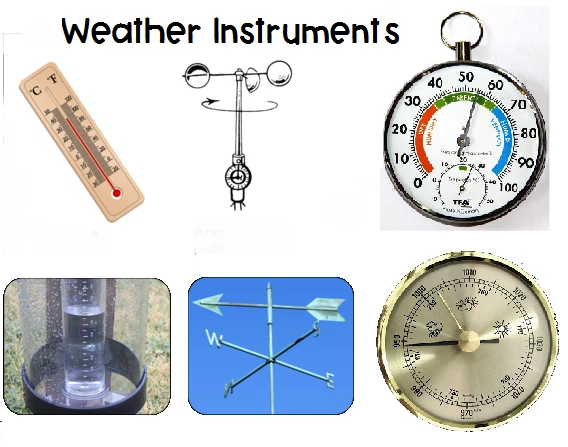
# The Instruments of the Weather
## Understanding Weather Instruments
Weather instruments are essential tools used by meteorologists and weather enthusiasts to measure and predict atmospheric conditions. These devices help us understand the complex dynamics of our planet’s weather systems, enabling accurate forecasts and climate studies.
## The Most Common Weather Instruments
### 1. Thermometer
The thermometer is perhaps the most recognizable weather instrument. It measures air temperature, typically using mercury or alcohol in a glass tube that expands or contracts with temperature changes.
### 2. Barometer
Barometers measure atmospheric pressure, which is crucial for weather prediction. A falling barometer often indicates approaching storms, while rising pressure suggests fair weather.
### 3. Hygrometer
This instrument measures humidity – the amount of water vapor in the air. Modern hygrometers often use electronic sensors, while traditional versions might use human hair, which lengthens with increased humidity.
### 4. Anemometer
Anemometers measure wind speed. The most common type has three or four cups that rotate with the wind, with the rotation speed converted to wind speed measurements.
### 5. Wind Vane
Also known as a weather vane, this instrument shows wind direction. The arrow-shaped device rotates to point into the wind, indicating the direction from which the wind is blowing.
### 6. Rain Gauge
A simple but vital instrument, the rain gauge collects and measures precipitation over a set period. Modern versions can automatically record rainfall amounts.
## Advanced Weather Instruments
Beyond these basic tools, meteorologists use more sophisticated instruments:
– Radiosondes: Balloon-borne instruments that measure atmospheric parameters at various altitudes
– Weather radar: Detects precipitation and measures its intensity
– Satellite imagery: Provides comprehensive views of weather systems from space
– Lightning detectors: Track electrical activity in storms
## The Importance of Weather Instruments
Accurate weather data collected by these instruments is vital for numerous applications:
– Agriculture: Farmers rely on weather forecasts for planting and harvesting
– Aviation: Pilots need precise weather information for safe flights
– Disaster preparedness: Early warning systems depend on weather instruments
– Climate research: Long-term data helps scientists understand climate change
## Maintaining Your Weather Instruments
For accurate measurements:
– Place thermometers in shaded, ventilated areas
– Keep rain gauges clear of obstructions
– Regularly calibrate your instruments
– Clean sensors to prevent debris buildup
By understanding and properly using weather instruments, we can all contribute to better weather observation and prediction in our local areas.
Keyword: instruments of the weather